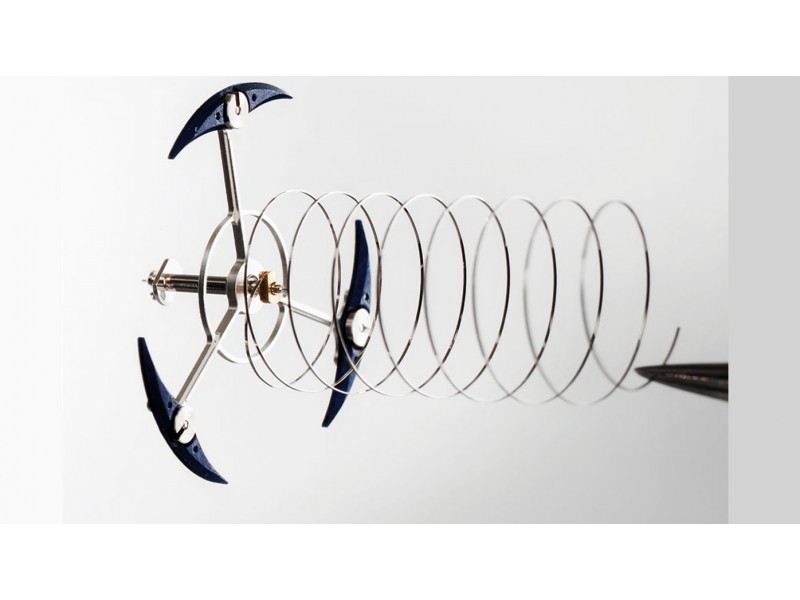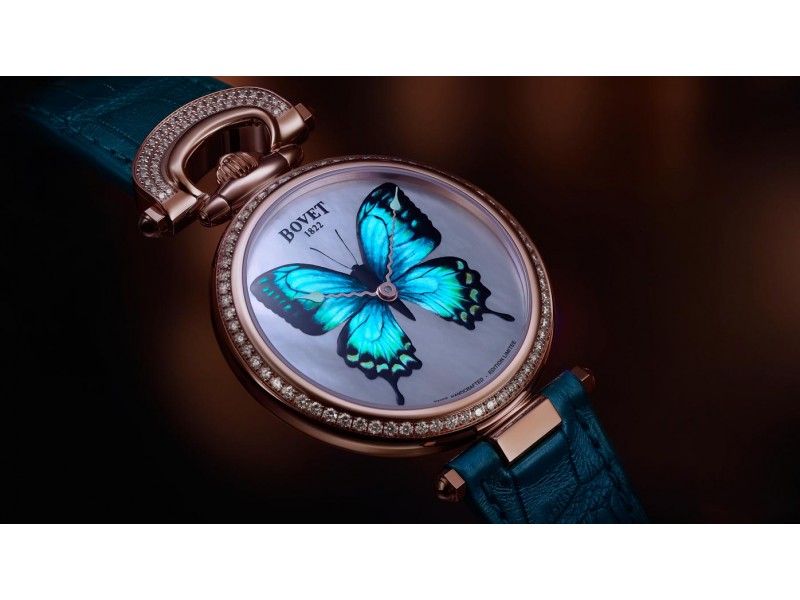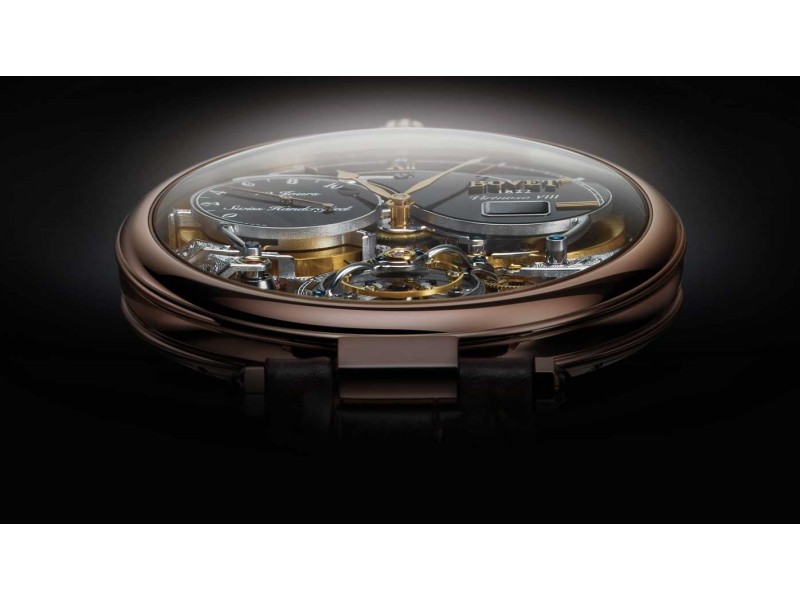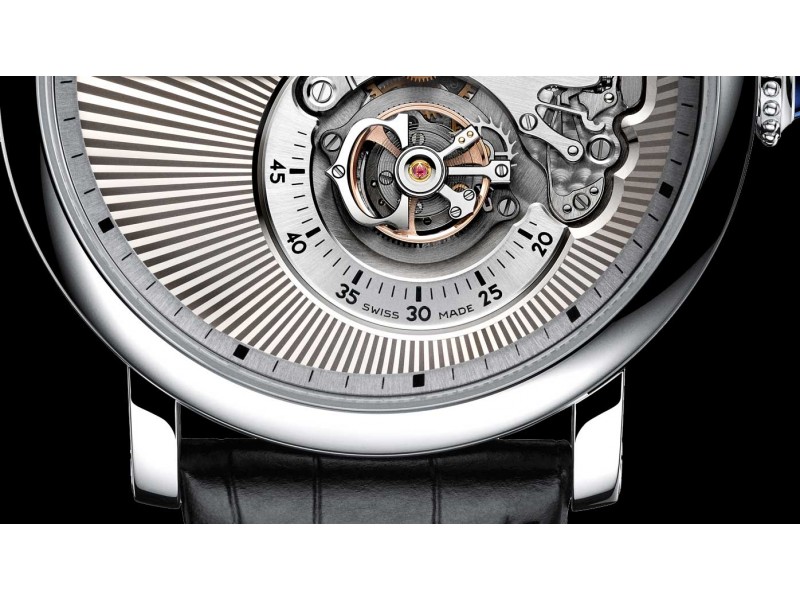
The balance wheel is a vital component of the movement that determines its precision and its identity, yet it often takes third place behind the escapement and the balance spring. Its exact function is not well known. It is in fact an inertia flywheel, meaning a wheel that stores and returns energy. The latter is supplied by the mainspring, via the escapement. It is then transmitted to the balance spring, one end of which is attached to the balance wheel. The balance spring “breathes” (opens and closes), and the two components oscillate together. The frequency of their movement should ideally be constant and it is on this basis that the seconds, hours and higher units are counted.

Jaeger-LeCoultre, Gyrolab balance wheel shaped like a double J and L.
STRUCTURE
For the balance wheel to be effective, it must fit perfectly with the balance spring. The two are classified and paired according to their dynamic behavior. This pairing is so important that they are delivered together, in some instances already assembled. But before that the balance wheel itself must be uniform. Its center of gravity must be identical with its central axis. Distribution errors, known as imbalances, must be corrected because they can impair the equilibrium of the balance wheel and generate friction. The balance wheel must consume a minimum of energy, while being capable of storing said energy. It must therefore have an optimum moment of inertia, which is achieved by locating the mass around the rim and reducing the weight of the rest of this component. This is why many balance wheels look extremely different and bear the aesthetic as well as technical signatures of the brands that use them.
DESIGN
Balance wheels were long distinguished by their spokes that varied in terms of both numbers and shapes. Then came color changes. In 2010, Bovet treated the balance wheel of its Tourbillon Pininfarina Ottanta to an electric blue PVD coating that provided a flash of color within a highly visible skeletonized caliber. The experiment was repeated this year in chestnut brown for the new versions of the Tourbillon OttantaSei, as well as at H. Moser & Cie. For the Schaffhausen-based brand, this is a means of signaling the arrival of a new balance spring alloy, produced in conjunction with its sister company Precision Engineering, a manufacturer of regulating organs that manages to ensure its innovation is clearly visible.

Bovet,Tourbillon Pininfarina Ottanta, blue PVD-treated balance wheel
PERFORMANCE
Breguet’s strongly historically inspired Tradition 7047 features a titanium balance wheel with gold screws. In this way, playing with appearances and materials actually influences the fundamental properties of the balance wheel, always with the aim of optimizing inertia and reducing weight. Jaeger-LeCoultre uses its non ring-shaped Gyrolab® balance, which is also shaped like its initials. Bovet has also created a similar balance – which it calls a balance felly rather than a wheel – without the usual ring-shaped rim, instead featuring three spokes with three felly sections tipped by roundly tapered inertia weights. In both instances, the idea also consisted of improving air penetration by reducing drag. While the latter factor might seem negligible, the aerodynamics of the balance are a longstanding concern. In 1957 already, Rolex had created its Microstella balance wheel, featuring adjustment screws placed inside the wheel so as to reduce friction and the resulting disturbances. The balance and spring assembly is so delicate that any excess weight, imbalance or friction strongly influences isochronism, which means that optimizing this little wheel is no small matter.

Breguet Tradition “Grande Complication” 7047



